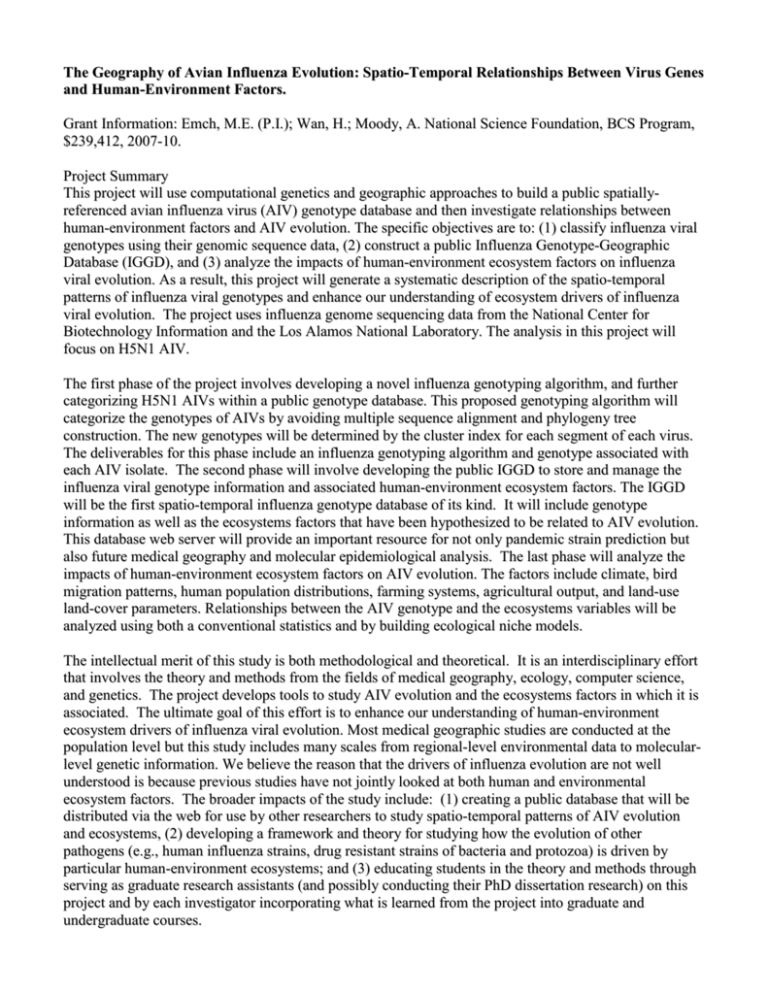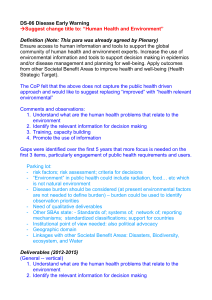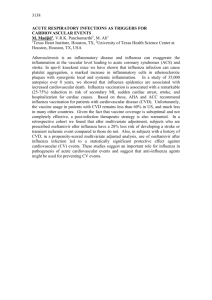Emch, M
advertisement

The Geography of Avian Influenza Evolution: Spatio-Temporal Relationships Between Virus Genes and Human-Environment Factors. Grant Information: Emch, M.E. (P.I.); Wan, H.; Moody, A. National Science Foundation, BCS Program, $239,412, 2007-10. Project Summary This project will use computational genetics and geographic approaches to build a public spatiallyreferenced avian influenza virus (AIV) genotype database and then investigate relationships between human-environment factors and AIV evolution. The specific objectives are to: (1) classify influenza viral genotypes using their genomic sequence data, (2) construct a public Influenza Genotype-Geographic Database (IGGD), and (3) analyze the impacts of human-environment ecosystem factors on influenza viral evolution. As a result, this project will generate a systematic description of the spatio-temporal patterns of influenza viral genotypes and enhance our understanding of ecosystem drivers of influenza viral evolution. The project uses influenza genome sequencing data from the National Center for Biotechnology Information and the Los Alamos National Laboratory. The analysis in this project will focus on H5N1 AIV. The first phase of the project involves developing a novel influenza genotyping algorithm, and further categorizing H5N1 AIVs within a public genotype database. This proposed genotyping algorithm will categorize the genotypes of AIVs by avoiding multiple sequence alignment and phylogeny tree construction. The new genotypes will be determined by the cluster index for each segment of each virus. The deliverables for this phase include an influenza genotyping algorithm and genotype associated with each AIV isolate. The second phase will involve developing the public IGGD to store and manage the influenza viral genotype information and associated human-environment ecosystem factors. The IGGD will be the first spatio-temporal influenza genotype database of its kind. It will include genotype information as well as the ecosystems factors that have been hypothesized to be related to AIV evolution. This database web server will provide an important resource for not only pandemic strain prediction but also future medical geography and molecular epidemiological analysis. The last phase will analyze the impacts of human-environment ecosystem factors on AIV evolution. The factors include climate, bird migration patterns, human population distributions, farming systems, agricultural output, and land-use land-cover parameters. Relationships between the AIV genotype and the ecosystems variables will be analyzed using both a conventional statistics and by building ecological niche models. The intellectual merit of this study is both methodological and theoretical. It is an interdisciplinary effort that involves the theory and methods from the fields of medical geography, ecology, computer science, and genetics. The project develops tools to study AIV evolution and the ecosystems factors in which it is associated. The ultimate goal of this effort is to enhance our understanding of human-environment ecosystem drivers of influenza viral evolution. Most medical geographic studies are conducted at the population level but this study includes many scales from regional-level environmental data to molecularlevel genetic information. We believe the reason that the drivers of influenza evolution are not well understood is because previous studies have not jointly looked at both human and environmental ecosystem factors. The broader impacts of the study include: (1) creating a public database that will be distributed via the web for use by other researchers to study spatio-temporal patterns of AIV evolution and ecosystems, (2) developing a framework and theory for studying how the evolution of other pathogens (e.g., human influenza strains, drug resistant strains of bacteria and protozoa) is driven by particular human-environment ecosystems; and (3) educating students in the theory and methods through serving as graduate research assistants (and possibly conducting their PhD dissertation research) on this project and by each investigator incorporating what is learned from the project into graduate and undergraduate courses.




